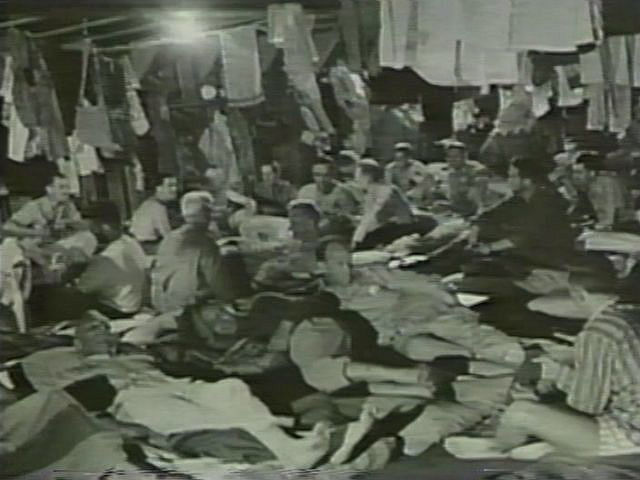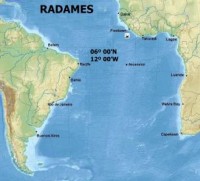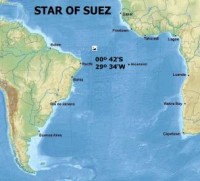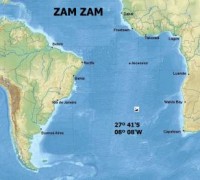SHIPS HIT EGYPT 3 - EGYPTIAN SHIPS LOST
4)THE RESCUE OF ZAM ZAM SURVIVORS
BY ELEANOR ANDERSON
Except for three men very critically injured, Zamzamers were transferred from the raider to a small German freighter on April 18, the day after the sinking. The name of the freighter was Dresden, but for the Zamzamers it came to be known as "the prison ship".
Men were bedded down in the Dresden's two cargo holds, sleeping on thin mats, head to toe and shoulder to shoulder. Using a rope ladder to get in and out of the holds, daylight hours were spent on deck, if weather permitted. The German guards watched closely as their prisoners stood in lines to receive meager portions of food in tin bowls, as they did calisthenics, as they passed the hours whittling, carving, reading, conversing. For many, time was spent in devotions and hymn singing.

Men taken in the cargo hold. Photo taken by LIFE magazine hold.jpg (640×480) (googlegroups.com)
Women and children, kept separate from the men, were crammed into the few cabins and lounges; some even slept on mats in the hallways. Bathroom facilities were very, very limited. There were no laundry facilities, except for washing by hand. With several of the little children coming down with diarrhea, mothers were heroic in their selfless service and positive outlook. Probably it hurt mothers most to hear their children's cries of hunger and to see their little ones growing thinner and thinner. The diet was usually a tasteless, starchy gruel for breakfast, with no milk or sugar, and a thin, watery soup for lunch and supper. Sometimes macaroni was added. Dark bread was available, but it took a few days before the children could stomach eating the bread, for it was easy to see the bugs baked in the bread. Even fresh water was in short supply and was doled out carefully twice a day.
If the stay on the prison ship had been only a few days, the conditions might not have seemed so memorable. However, it turned out that Zamzamers were on the Dresden for 33 days and nights. For the first week, it seemed the Dresden went in circles. Sure enough, after nine days the Dresden met up with the raider again. A small delegation of Zamzam men, carrying a letter of protest, went aboard the raider for a brief meeting with Captain Rogge. Sadly, it was learned that Ned Laughinghouse, critically injured during the shelling, was very near death.
As for the protest letter, it brought few results. It did make allowance for men with wives and children on the Dresden to spend two hours together every morning. And there were slight additions of food, such as canned milk for children under age two. But overall, life on the prison ship did not change. This was wartime. The Zamzam survivors just had to make the best of it. Apparently the Dresden had received orders at the time of the rendezvous with the raider, as the Dresden now steamed north, day after day. The weather got colder. Almost every piece of salvaged clothing was shared and put to use, style being of little concern. As they shivered on deck, the Zamzamers wondered, "Where are we going?" Another constant concern was, "What do our loved ones think has happened to us and how are they coping?"
As one week became two, then three, then nearly a month since the Zamzam had been sunk, surely loved ones must know something awful has happened. But the Zamzamers could send no messages. Instead, they talked and talked with each other, as one big family, and they prayed and prayed to their Heavenly Father. Finally, the Dresden changed course and headed straight east. The Dresden's captain admitted he was going to attempt to take the Zamzamers to German-occupied France. And, in order to get there, he had to go through waters known as the British Blockade. Enemy action and even death were likely possibilities, the captain warned, as for seven days and seven nights the Dresden plowed through dangerous water.

ZamZam and Dresden routes in the South Atlantic. Photo map.jpg (640×480) (googlegroups.com)
When lights on the coast of Spain were sighted late on May 18, immeasurable joy and thanks to God filled the hearts of the Zamzamers. They could hardly sleep that night. Land was near. They had been on the ocean for nearly six weeks - ever since their stop at Recife, Brazil. How eager they were to disembark at the harbor of St. Jean de Luz, France. The long and dangerous voyage was nearly over! But, that great joy was soon marred, as it was learned that only Americans were being taken off the Dresden now. Non-Americans were to be taken on to Bordeaux and then to internment as war prisoners. As the news spread, tears flowed. It was so hard to part from friends who had been through so much together.
Much more painful, though, were the separations between husbands and wives, such as a Canadian husband being sent to prison camp but his American wife about to be set free. Also, it was learned that the ambulance drivers group, although they were American citizens, were being taken on to Bordeaux, as were the Catholic priests and teaching brothers, traveling on Canadian passports.The Dresden's voyage was nearly completed. With God's help, the German freighter, ladened with precious human "cargo", had slipped through the British Blockade. She had safely deposited her American passengers on French soil and now turned toward Bordeaux, France, with the rest of the prisoners from the Zamzam.


